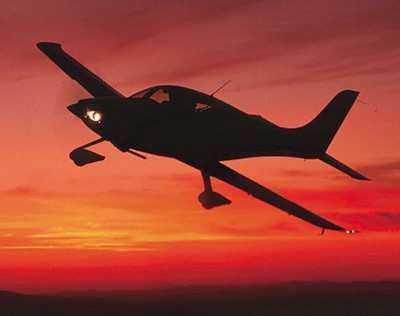Pilot Diverted For Bad Weather
 Below is the unedited
Preliminary Report from the National Transportation Safety Board on
an accident involving a Cirrus SR20 in Kremmling, CO. As Aero-News
reported, the two people onboard -- a father and his young son --
were found alive several hours after their plane impacted
mountainous terrain while executing a missed approach.
Below is the unedited
Preliminary Report from the National Transportation Safety Board on
an accident involving a Cirrus SR20 in Kremmling, CO. As Aero-News
reported, the two people onboard -- a father and his young son --
were found alive several hours after their plane impacted
mountainous terrain while executing a missed approach.
Like we said at the
time, it could have been A LOT worse... as
according to the NTSB, poor weather at 16,000 feet led the pilot to
divert to the mountain valley airport -- where conditions,
evidently, weren't much better -- Ed.
NTSB Identification: DEN06FA114
14 CFR Part 91: General Aviation
Accident occurred Tuesday, August 15, 2006 in Kremmling, CO
Aircraft: Cirrus Design Corp. SR20, registration: N8127J
Injuries: 1 Serious, 1 Minor.
This is preliminary information, subject to change, and may
contain errors. Any errors in this report will be corrected when
the final report has been completed.
On August 15, 2006, approximately 2230 mountain daylight time, a
Cirrus Design Corporation SR20 single-engine airplane, N8127J, was
destroyed when it impacted mountainous terrain while maneuvering
near Mc Elroy Airfield (20V), Kremmling, Colorado. The commercial
pilot sustained serious injuries and the passenger sustained minor
injuries. The airplane was operated by West Valley Flying Club,
Palo Alto, California, and registered to NIV Aviation, Los Alto
Hills, California. Dark night visual meteorological conditions
prevailed, and an instrument flight rules flight plan was filed for
the Code of Federal Regulations Part 91 personal flight. The flight
departed Cedar City Regional Airport, Cedar City, Utah,
approximately 1830, with a planned destination to Jeffco Airport,
Denver, Colorado.
According to the pilot and preliminary air traffic control
communications, prior to departure from Cedar City, he obtained a
standard weather briefing via telephone. While en route at 16,000
feet mean sea level (msl), the airplane encountered rain and
moderate turbulence. While in communication with Denver Air Route
Traffic Control Center (ARTCC), the pilot requested to "reroute
around the weather." Due to the continued rain and turbulence, the
pilot requested to divert to an alternate airport. Denver ARTCC
informed the pilot that 20V had an instrument approach.
Subsequently, the pilot elected to attempt to land at Mc Elroy
Airfield (20V), Kremmling, Colorado. During the approach, the pilot
stated the airplane "broke out near the decision height altitude;"
however, he could not see the runway and elected to initiate a
missed approach. During the missed approach, the airplane impacted
mountainous terrain approximately 4 miles west of 20V. Search and
rescue operations located the airplane approximately 0615 on August
16, 2006.

The airplane impacted rock and sagebrush covered terrain and
came to rest upright at an elevation of 8,350 feet msl. The
wreckage debris path measured approximately 150 feet in length on a
measured magnetic heading of 250 degrees. Examination of the
airplane revealed the underside of the fuselage was crushed and the
fiberglass was fragmented. The nose and main landing gears were
separated. The leading edges of the left and right wings were
partially delaminated and punctured. The engine was partially
separated from the firewall and remained attached via engine
control cables. The two propeller blades displayed leading edge
gouging, forward bending, and both blade tips were separated. The
Cirrus Airplane Parachute System (CAPS) was not deployed.
At 2231, the 20V automated surface observing system (ASOS)
reported the wind from 290 degrees at 7 knots, 10 statute miles
visibility, rain, sky scattered at 3,300 feet above ground level
(agl), broken at 5,000 feet agl and overcast at 8,000 feet agl,
temperature 15 degrees Celsius, dew point 9 degrees Celsius, and an
altimeter setting of 30.34 inches of Mercury.
 SpaceX to Launch Inversion RAY Reentry Vehicle in Fall
SpaceX to Launch Inversion RAY Reentry Vehicle in Fall Aero-News: Quote of the Day (04.23.24)
Aero-News: Quote of the Day (04.23.24) Aero-News: Quote of the Day (04.20.24)
Aero-News: Quote of the Day (04.20.24) ANN's Daily Aero-Linx (04.20.24)
ANN's Daily Aero-Linx (04.20.24) Aero-News: Quote of the Day (04.21.24)
Aero-News: Quote of the Day (04.21.24)




